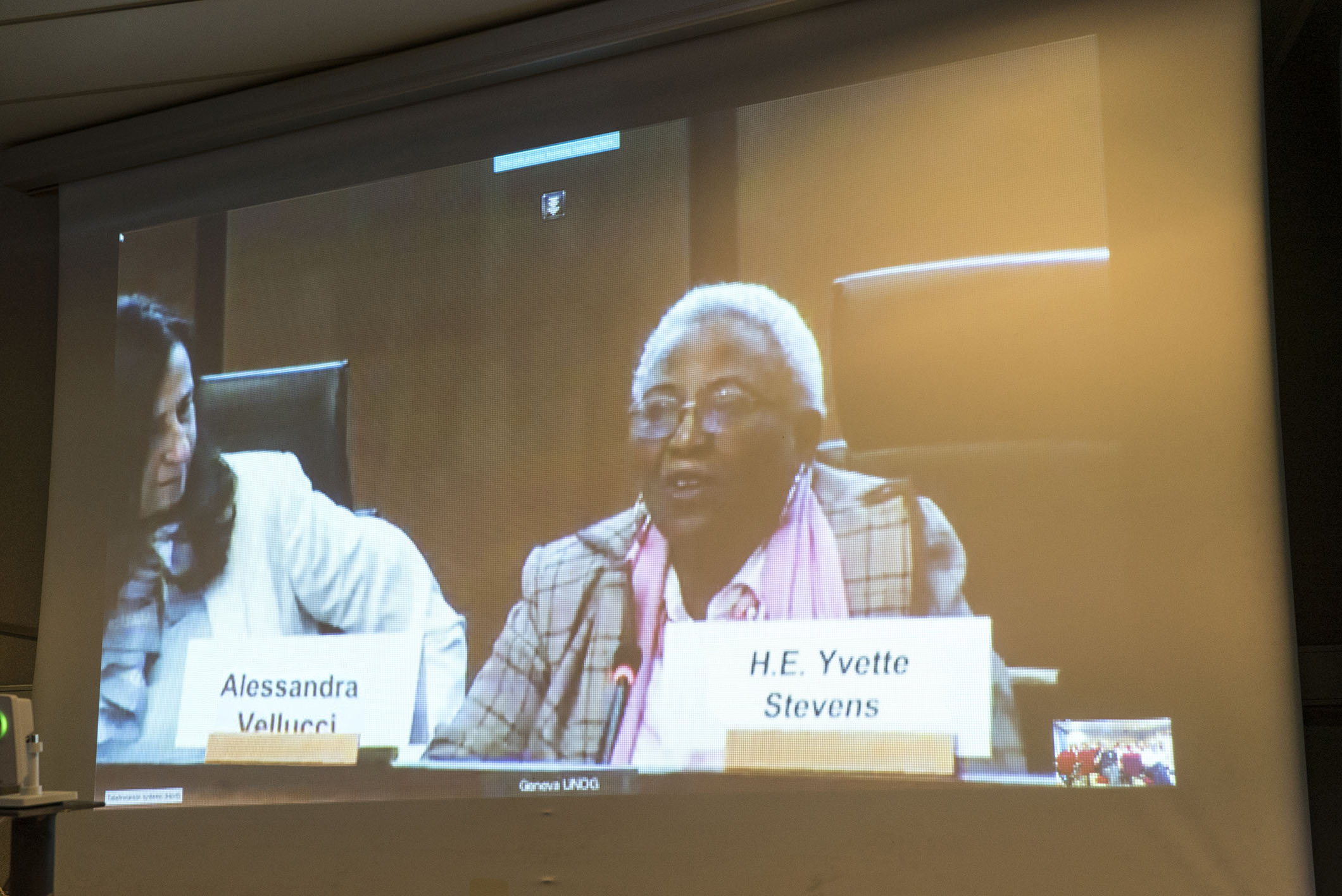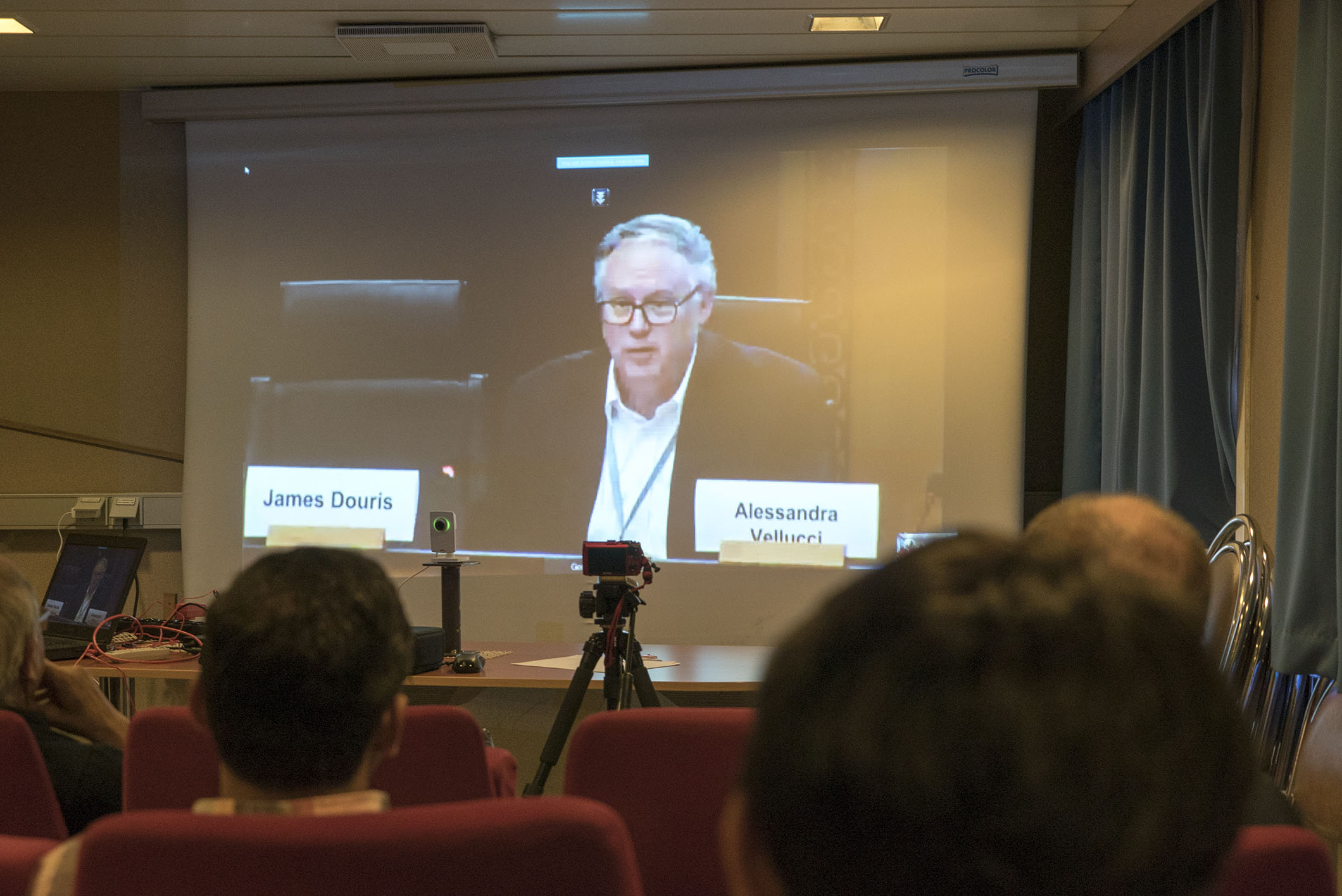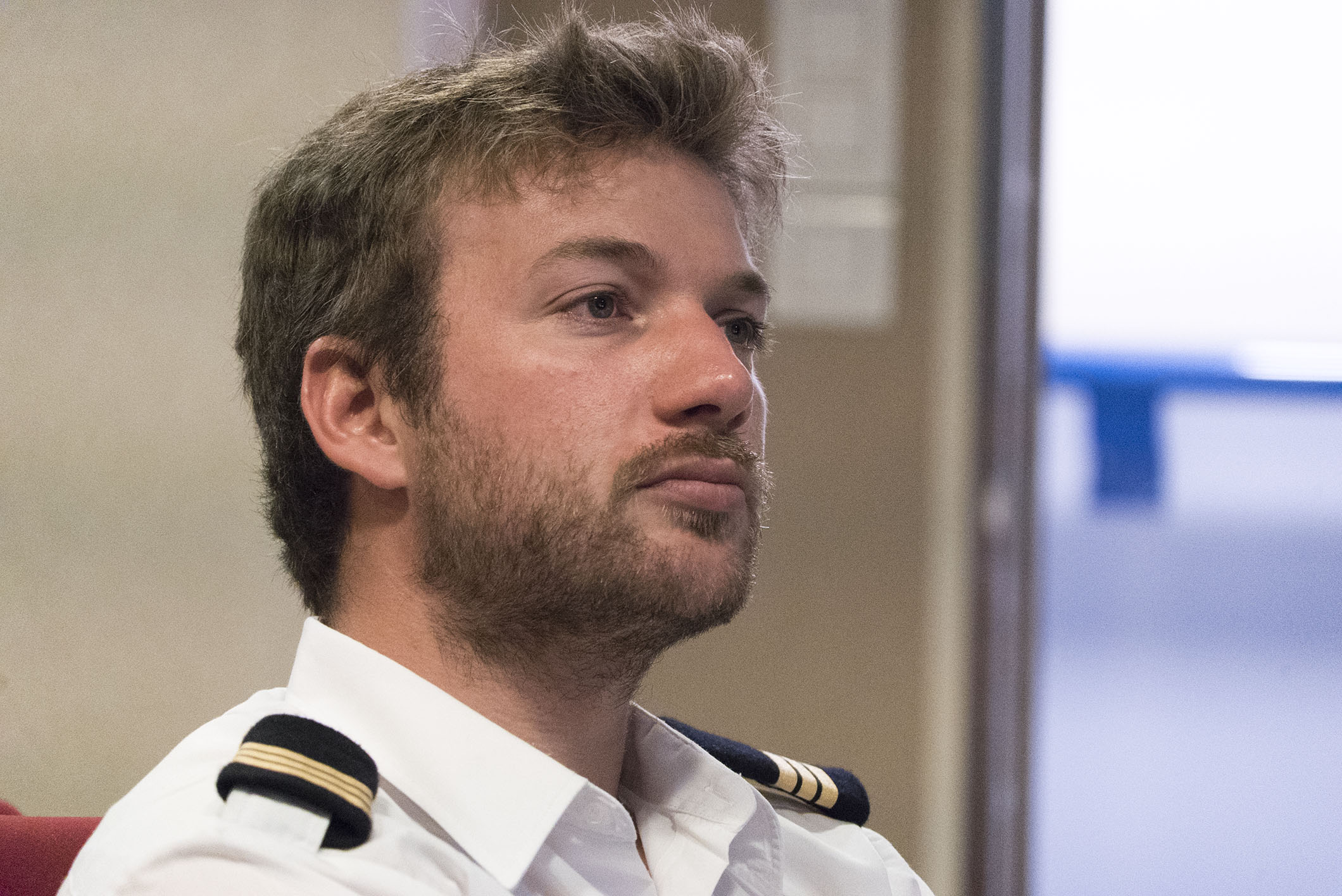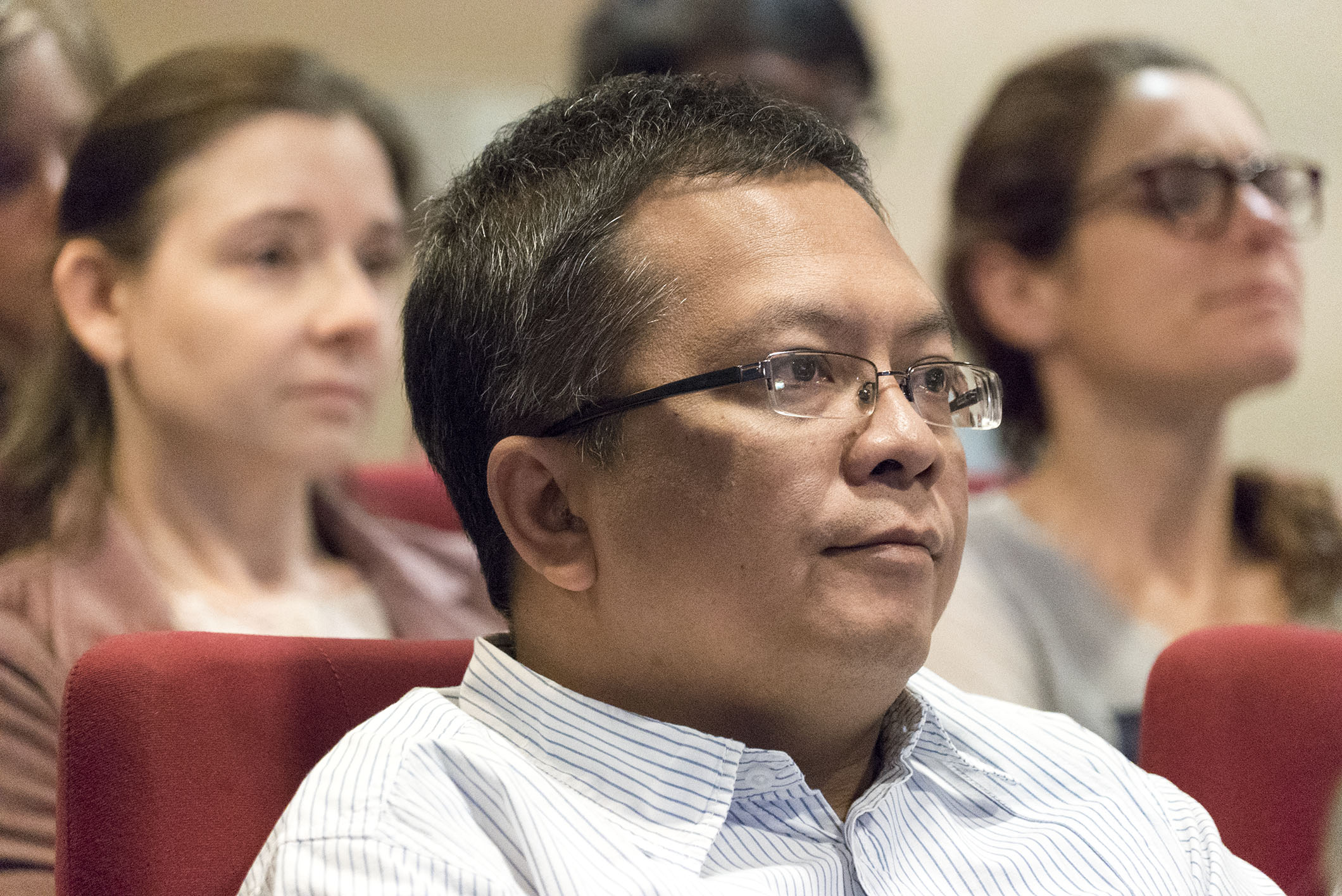If you know anyone who has ever been out at sea for a long period of time, they will tell you just how difficult it is to have access to certain luxuries such as internet connection. On board R/V Marion Dufresne the internet speed varies wildly, but it is at best, slower than mediocre bandwidth on land.
With this in mind, Chief Marine Technician Sacha Fouchar had to try every trick in the book to make our conference call with the United Nations (UN) in Geneva possible.
Chief Scientist Satish Singh was invited to share his experiences in a joint event organised with the United Nations Office for Disaster Risk Reduction. The goal was to discuss how to reduce disaster risk in order to achieve the UN sustainable development goals.

Professor Singh exchanged ideas with Ambassador Yvette Stevens, Permanent Representative of Sierra Leone to the United Nations; and Mr. James Douris, from the Disaster Risk Reduction Service Division of the World Meteorological Organisation. Several lessons can be drawn from the discussion.
Have a Plan
It might sound simple, but devising a plan that ensures a prompt and effective response to disasters can be a complex process that begins well before a natural hazard occurs. Unsurprisingly, science plays a fundamental role in this preparation.
“The key is to not only go out and try to help people, but also to go back to the basics and try to understand the causes of a particular disaster. To do so, science is key,” shared Prof Singh.
One thing that might come to mind when thinking about emergency response is evacuation. However, simply moving everyone out of a disaster zone is not necessarily good planning. Research must go into determining which areas should be evacuated, and which areas would benefit from simply educating the populace so that they know what to do in the event of a disaster.

It is fundamental to have a deep understanding of how different variables interact and affect each other. This is what Mr Douris calls ‘cascading risk.’ In 2011, when a magnitude-9.1 earthquake struck Japan, the threat was amplified by a factor of three when the earthquake caused a tsunami and a nuclear emergency.
Mr Douris reflected on Japan’s adequate emergency response: “If you look at the hazard and you understand the risks, you can actually affect policies and ensure that retrofitted buildings are being constructed and people are protected.”
Spread the Word
It is one thing to gain knowledge, and another to make use of it. Once research has been conducted and plans have been made, the next most important step is to educate communities. In 2009, an earthquake changed the course of the Sarapiqui River in Costa Rica.

The Costa Rican government partnered with the UN and community leaders to ensure that those at risk understood how the river’s flooding patterns had been affected and how best to prepare for the imminent floods. Experts mapped the area and documented the levels of risk. They enabled the community to develop an early warning system, through which the government would inform the community about rainfall and other indicators of floods.
The community itself now takes charge of evacuations. Since 2009, many floods have taken place and the evacuation plan has worked flawlessly. Involving the community in the planning stages of a disaster response plan is fundamental to its success.
Reduce the Risk
When Ambassador Stevens was a child in Sierra Leone, the rain would sometimes cause her to miss school. She would watch as crystal clear water streamed down from the mountain and into the ocean. As the years went by, war broke out. Those affected had been displaced and took to settling in the mountains. They carved the side of the mountains for rocks to construct their houses. They cut trees for fuel and charcoal. When the rains came, Mrs Stevens saw that the colour of the water was changing; it was becoming brown and murky. This, she now knows, was an indication to issue an alert that could have potentially saved the lives of those who perished in the mudslide.

Since then and now, much progress has been made with regards to our knowledge of earth systems. Today, we can accurately forecast the weather seven days into the future. In the 1970’s, this same accuracy was only possible for a one-day forecast. This, and other examples, make the panellists optimistic. They believe that the scientific community has taken steps in the right direction in considering the costs of geohazards to society.
The panellists agree that, in order to face the challenges posed by geohazards, we need an integrated effort that incorporates civil society, national governments, the private and public sectors, international organisations, and, of course, scientists.
Follow the progress of MIRAGE II between 25th September and 20th October 2017 on the EOS blog, and spread the word using #MIRAGEcruise.